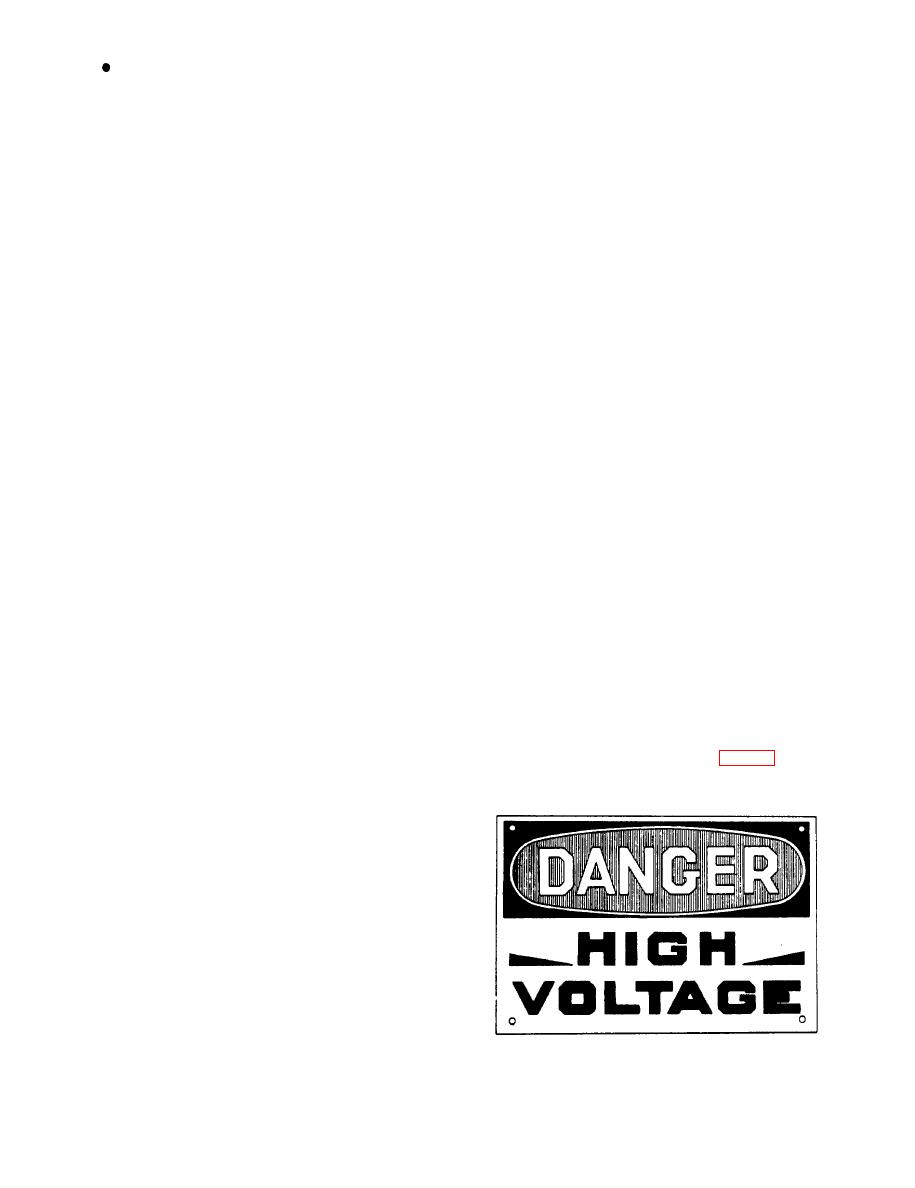 |
|||
|
Page Title:
Figure 1-1.-High voltage warning sign. |
|
||
| ||||||||||
|
|
 WARNING SIGNS, PLATES, POSTERS,
General EIMB Handbook, NAVSEA SE000-
TAGS, LABELS, AND MARKINGS
00-EIM-100, chapter 3--Provides general
safety precautions and policies for electronic
Warning signs, plates, and suitable guards/
maintenance personnel.
markings should be provided to prevent personnel
Personnel are also advised and informed on
from coming into accidental contact with dangerous
mishap prevention through the following periodicals:
voltages; for warning personnel of the possible
presence of explosive vapors and radio frequency
Fathom magazine, the afloat safety review, is
(RF) radiation; for warning personnel working aloft
published bimonthly for the professional benefit of all
of poisonous effects of stack gases; and for warning
hands by the Naval Safety Center. Fathom presents
personnel of other dangers that may cause injury to
the most accurate information currently available on
them. Equipment installations should not be
the subject of shipboard mishap prevention.
considered complete until appropriate warning signs
have been posted in full view of operating and
maintenance personnel.
Ships' Safety Bulletin is published monthly by the
Naval Safety Center. This bulletin contains articles on
shipboard safety problems, trends, mishap briefs, and
WARNING SIGNS
statistics.
Warning signs (red/white) and caution signs (yel-
low/black) should be located in an area where known
hazardous conditions exist or may exist. Some of the
the Naval Sea Systems Command. This magazine
areas that are hazardous are wet, oily, or electrical
contains information on the design, construction,
spaces.
conversion, operation, maintenance, and repair of
naval vessels and their equipment. It also contains
DANGER--High Voltage and DANGER-- Shock
articles on safety hazards and their prevention.
Hazard warning signs are required near the entrance
areas of compartments and walk-in enclosures that have
Flash, a monthly mishap prevention bulletin, pro-
equipment with voltages in excess of 30 volts. Signs are
to be posted at eye level or above in full and clear view
vides a summary of research from selected reports of
of entering personnel. Signs should also be located on
submarine hazards to assist in the prevention
or near equipment that is particularly dangerous or
program. It is intended to give advance coverage of
equipment having exposed conductors.
safety-related information while reducing individual
reading time.
DANGER--Shock Hazard signs are to be used
where voltages are between 30 and 500 volts. Where
These publications, as well as notices and
voltages are in excess of 500 volts and where voltages
instructions distributed by cognizant bureaus, make
both below and above 500 volts are present, only the
danger high voltage warning sign (fig. 1-1) will be
excellent reference materials. When these pub-
lications are available, you should read them and
incorporate them into your training program.
Other sources of safety information that you will
be dealing with on a day-to-day basis in your work as
an IC Electrician are manufacturers' technical
manuals and PMS maintenance requirement cards
(MRCs).
These are not all of the safety resources that are
available to you. However, these sources give you a
good starting point from which you can expand your
knowledge of safety procedures. The Naval Safety
Supervisor, NAVEDTRA 12971, is also a very good
resource for strengthening your awareness of safety
procedures.
|
|
Privacy Statement - Press Release - Copyright Information. - Contact Us |